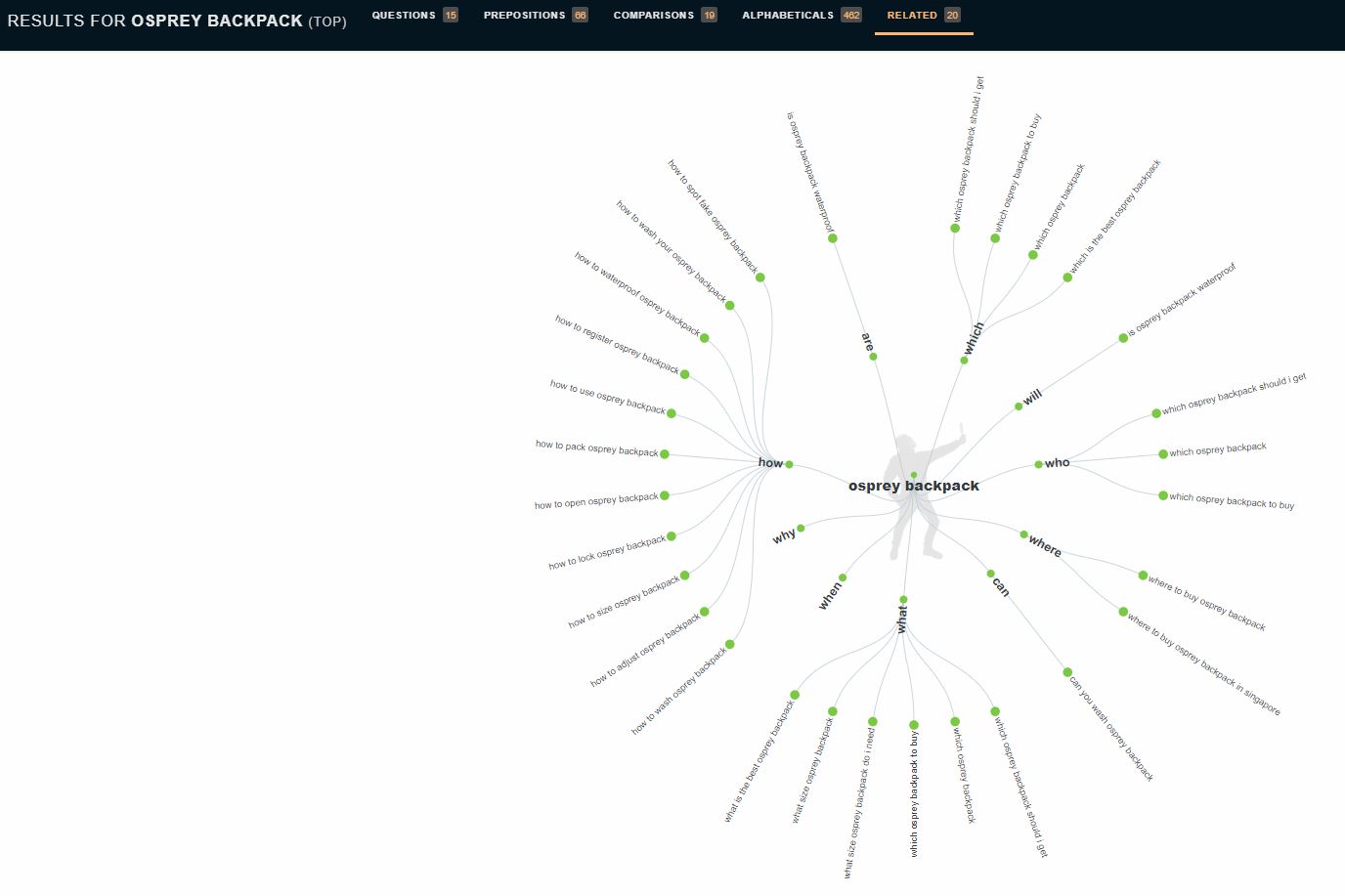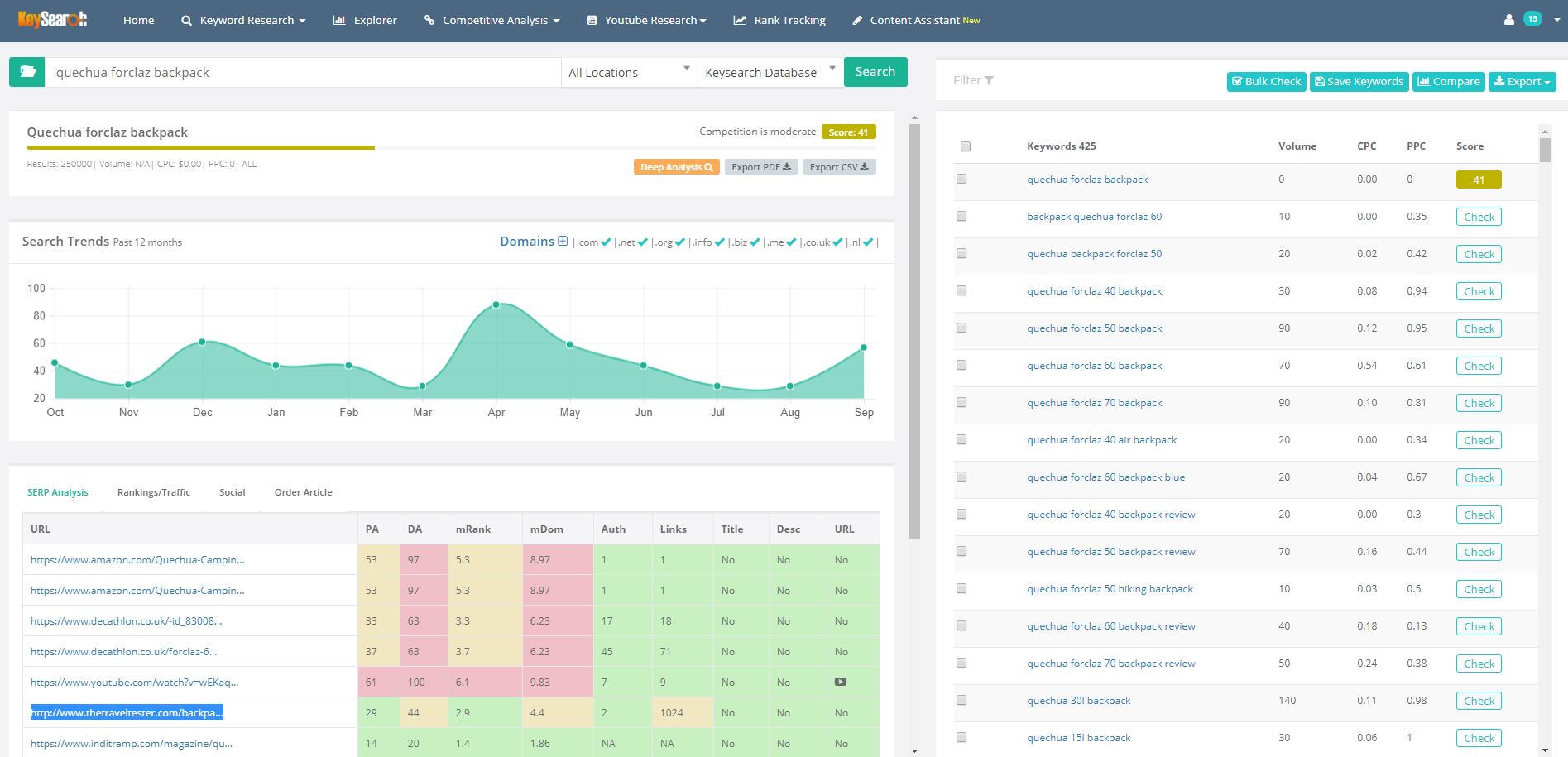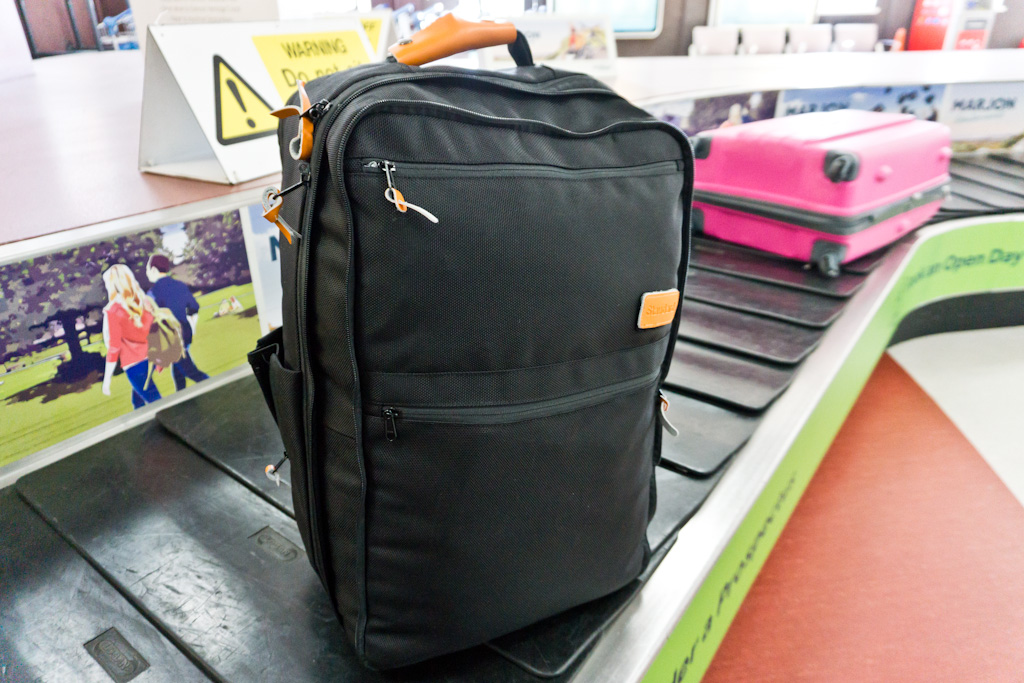Writing as ‘The Travel Tester’, you wouldn’t be surprised to find out that I love trying out travel gear on my trips all over the world. My grandfather was a published travel writer covering topics such as light-weight camping and survival in the wild, so I guess I inherited his passion for discovering clever backpacks, solar-powered headlamps and sexy water-filtration systems.
While I’ve been blogging since 2006 and have always recommended travel gear to my readers, I never really took the time to write some more extensive reviews about the gear that I brought on my trips.
I guess I always assumed that to be a good travel product review writer, you had to be at least Bear Grylls’ sibling and spend your free time hanging upside-down from a cliff while doing laundry, or only dress in Khaki and Camel-coloured outfits, trying to convince people that you can’t leave the house without an Indiana Jones-style multi-pocket fishing waistcoat.
While I love a good nature trip every now and then, most of my time abroad is spent on city breaks. And to be fair, apart from my dad, I’ve never seen anyone really rock the archaeologist look anyway.
Over the last years, I’ve been focusing my attention a bit more on adding product reviews to my blog, and I soon realized that it’s actually not that hard to create a review that people are interested in – and that generates a bit of extra income.
‘I guess I always assumed that to be a good travel product review writer, you had to be at least Bear Grylls’ sibling and spend your free time hanging upside-down from a cliff while doing laundry’
From finding the right products to write about, to outlining the review, shooting photos and videos and eventually earning from this type of content, here’s how I monetize my product reviews:
The purpose of a review
Before I start testing and writing, I always think first about all of the reasons my audience possibly has for reading this particular review in the first place. For example, they want to know:
- …if the product is right for them?
- …what the pros and cons of the product are?
- …how this product compares to others?
- …if the product is of high quality and justifies the price?
- …how to use this product?
- …if the product is suitable for a specific type of trip (destination/duration/climate, etc.)?
- …what your personal experience was when using the product?
When you keep the specific questions that people ask in your mind, you can add all those answers to your review and increase the likelihood of someone actually buying the product through your link.
In general it’s safe to say that people don’t just want to know about all the fancy features, they want to see how the product performs in real life for someone in the same situation as them.
‘people don’t just want to know about all the fancy features, they want to see how the product performs in real life for someone in the same situation as them’
One of the best places to find questions is a website such as answerthepublic.com. Here you type in the product name, for example, and you’ll get a list of questions that people ask about that specific product. They also give you keyword ideas and even related keywords to other products you might want to consider reviewing.
Keyword research
Once I’ve found the most popular questions that people ask, I have a closer look at keywords. My favourite tool for this is keysearch.co . I simply type in the product name, hit search and I get a full list with keywords and their search volume, competition and related keyword suggestions.
From here, I select all the keywords that could rank, add them to a list within the tool and export that list to be able to organise them all into categories (such as ‘where to buy’, ‘how to clean’, etc.).
I then pick my main keywords that I use in my title, URL, first paragraph and header, the rest I sprinkle in throughout the text wherever it works naturally. Because I write quite long reviews, it isn’t too hard to add at least 20-30 keywords into the article.
Structuring the review
By doing keyword research first, I already have a pretty good idea of how I’m going to structure the review and which of the terms I want to use in my headings and subheadings.
Apart from that, I’ve created my own review structure by choosing to keep every single review I do the same. I start with an introduction to the company, then I review the product based on the 5 senses (look, feel, taste, smell and sound) and I finish the review with additional information on where to buy the product, etc.
In general, I would say that each review should at least answer the following questions:
- How did you find out about the product? Why did you get it?
- What does the product do?
- What was your experience with the product after the first test?
- What was your experience with the product after the second test? (I always recommend testing more than once!)
- Was the product easy to use?
- Did the product deliver on your expectations?
- How often did you end up using the product and would you use it again?
- What are all the specifics of the product? (features, materials, weight, price, etc.)
- How does this product compare to other similar products?
- What are all the pro’s and con’s? (make sure the con is really a con, for example: slow download time isn’t a con as this has to do with your internet connection, not the product).
If you can, add a video, there really are far less quality video reviews out there than you might think, so there is a great chance of you ranking for them on YouTube. Of course, link back to your blog post and link to all affiliate products in the video description and embed the video in your blog article for maximum reach!
Also don’t forget to link from your review to any relevant articles you might have on your blog already. For example, if you’re reviewing shoes that are great for rough terrain, why not link to your post about hiking in the Himalayas and show the type of trip the product would be amazing?
Again, put yourself in the shoes (no pun intended) of your readers and really think about when they will use the product and what questions or hesitations they might have.
Where to find products to review?
Before you get into the actual reviewing, of course you’ll need a good product to test. With most travel bloggers being active travellers themselves, this shouldn’t be a problem. Just start with what you already have.
A backpack, hiking shoes, piece of clothing, flashlight, drinking bottle, some electronics, your camera, it doesn’t really matter, although it would be smart to do a bit of research on your first review and see if people are actually interested in reading more about it to be able to create a good case study out of it.
Once you have created your first review, make sure to gather all the statistics and readers comments and add this to a one-page document that you can use to reach out to brands with. Compile a list of companies/products that you’re excited about, find a contact on their website or get one from a representative that you met in person at an event (always better, of course) and propose a collaboration.
If you are not sure this brand works with bloggers, just ask them via email or social first or check other blogs to see if they already feature in collaborations. If you attend networking events (and you should!), just chat with other bloggers and ask if they are willing to trade contacts with you.
Make sure to create a section on your blog with product reviews you’ve done before and add this option also to your ‘work with us’ page and media kit, so brands know they can reach out to you for this.
Other ways that I’ve found products to review is through goodie bags at PR events, clothing that was gifted to us on a press trip (see photo below) and competitions that I won. Or simply borrowing items from friends and family can work too!
Some brands, such as those providing camera equipment and mobile phones, are usually also interested in you taking products out on loan for a certain period of time. If you can then use these products to create great content for yourself, that could be a win-win for you as well.
As you can see, there are plenty of opportunities to get products to review for your blog. As long as you can show your value and it’s a good fit for your audience, go for it!
Getting paid for product reviews
Getting a free pair of shoes or a backpack can be great, but after a while you’ll probably have enough of them …or your partner tells you that you’ve got enough (I may or may not know this from personal experience). Then you might want to make your product reviews a bit more sustainable and think about generating income from them.
‘Getting a free pair of shoes or a backpack can be great, but after a while you’ll probably have enough of them.’
There are several ways to generate income from your product reviews. Here are three of my favourites:
- ADDING AFFILIATE LINKS
Adding affiliate links is one of the easiest ways to get income from the products you review. Amazon is probably the program with the lowest entry barrier, but not all products will be on there, so sometimes you’ll have to look a bit further.
Most larger brands will have their own affiliate program that you can sign up for, but even if they don’t have it listed on their website, it can’t hurt to email them to ask. Sometimes, they haven’t even thought about it, or you can get a discount code for your readers on top of a percentage of the sale.
Don’t forget that you can also add affiliate links to pins on Pinterest and that you can also link to the product directly on there!
- CREATE REVIEW PACKAGES
For every product review request (or even just a press release featuring a cool product) that I get in my inbox, I send out 3 packages for them to choose from. This includes:
- a free package (so I can also work with small family-run companies or startups with no budget). In this package, they don’t get a full review, but simply a mention in another post or packing list / gift guide. I also try to use an affiliate link here instead of a link to their main website.
- a medium-prized package. In this package, they will get a full review highlighting all features of the product with social media promotion, I add a bit about their company story and they can add a specific brand message if they want.
- a higher-prized package. In this package, they get not only a full review with all the social promotion, but I’m adding another mention in another blog, videos (unboxing + review) and a newsletter mention.
For all these packages, they have to send me a complimentary product (I never write or mention products that I haven’t held in my hands myself) and I don’t copy and paste press releases. All reviews are written only by myself and I will give them a preview link after which I’ll only edit once before it goes live.
If the product is interesting enough, I will send the brand add-on options to choose from, such as a competition/giveaway or a bundle of photos they can use on their own site.
- BECOME AN AMBASSADOR
If you’re a raging fan of a particular brand, why not try and get an ambassadorship with them? I once worked with a luggage company on a free review (this was years ago, when my blog was really small), who then sent me another bag a few years later, and are now paying for my biggest package + add-ons because I am so in love with their product.
I literally use their bag on most of my travels (you might spot it in the photo below) and they have picked up on the fact that I’m a great spokesperson for their brand. We also set up an affiliate deal on top of the other reviews and mentions I give them and do regular giveaways.
Think about which brand you’re super excited about and see if there is a way for you to develop a relationship with them!
Disclaimer: There is a bit of a discussion among bloggers whether or not product reviews should be paid or not. Those against will say it affects the objectivity of the reviewer, but I don’t totally agree with that.
Of course there are plenty of people that take the money and run, but I believe that if you really write an extensive review that is based on your own experience, in which you answer all your readers’ questions and give a clear disclosure, then there is nothing wrong with you getting compensated for your time, expertise, platform and any additional promotion, just like you would on a paid campaign to a destination.
If you are unsure about the best way to disclose review partnerships, please check the following sites:
- webmasters.googleblog.com/2016/03/best-practices-for-bloggers-reviewing.html
- ftc.gov/tips-advice/business-center/guidance/ftcs-endorsement-guides-what-people-are-asking
- termsfeed.com/blog/ways-you-can-disclose-endorsements
- http://asa.org.uk/uploads/assets/uploaded/3af39c72-76e1-4a59-b2b47e81a034cd1d.pdf
‘When people are searching for reviews, they don’t want a short blurb with a few star icons tossed at them. They want you to go full nerd mode, so they don’t have to do the research themselves.’
Final Tips
After one of my most recent reviews, I got this email from the PR-person:
“Wow – I have worked with X for over ten years and this is by far the most thorough review! It’s so nice to read something that isn’t just a duplication of a press release and I am so pleased you loved them!
Thanks also for the campaign report – you are a great example of how a good influencer should work and it is really helpful to have your clarity of information and also clear guidance on deliverables.
Lots of great new products in the pipeline so will absolutely keep you in mind for future collabs.
Now, I believe this is an email we would all love to get after a collaboration, so what did I do to make the brand happy? It’s quite simple, really:
Be a Nerd
My product reviews seldom are under the 1000-1500 word mark. That’s because I write about EVERYTHING I can possibly think of that my readers want to know about.
When people are searching for reviews, they don’t want a short blurb with a few star icons tossed at them. They want you to go full nerd mode, so they don’t have to do the research themselves. Read up on the production process of the fabric, what all the technical terms mean, what the difference is between two types of rubber soles. Become the expert!
Be Original
This is so important guys! Always make sure to shoot your own photos and video and write your own words. Be honest about your experience and include actual information about the usage of the product. Don’t just give a promotional speech and glorify the product. Nobody needs that.
Communicate
Whether there are any problems in shipping (my neighbours seem to love taking and then hiding my packages for example, it drives me nuts!), you are overwhelmed with other blogs you still need to write, a trip you’d planned on taking the gear got cancelled, or you have any questions at all… tell your contact person, they will understand!
And after you’ve finished your review, send them over a little report with any stats at all you can share, any readers comments, any affiliate sales generated. You can always send an updated report later if the numbers are still low. Give your contact something to show their boss and they will keep you in mind for future work.

Nienke has been blogging since 2006 and runs cultural travel & self-development blog The Travel Tester, as well as the Dutch-language UK-travel blog The London Tester. With a focus on product, restaurant, book, tour & activity reviews, Nienke loves trying out new things and sharing tips and experiences from all around the world with her audience. On Pinterest, her ‘Mappin Monday’ community reaches over 530.000 travellers planning their trips online.





3 Comments